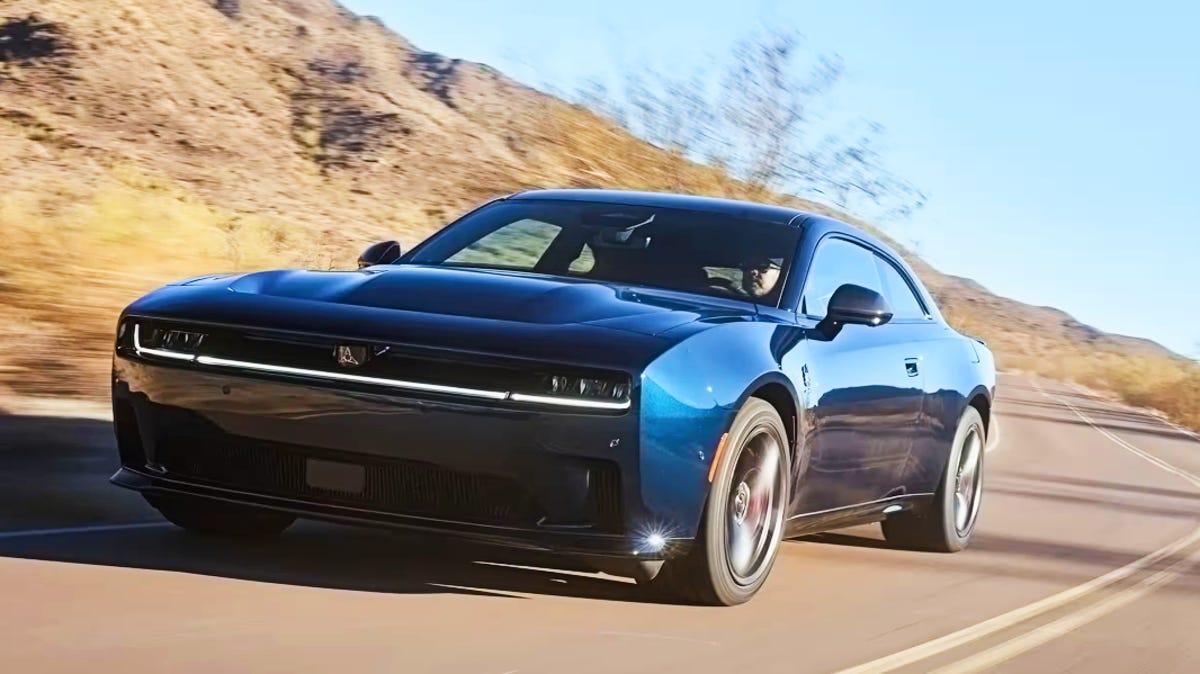Dodge electric muscle car speeds up on its own, shocking expert road test reviewer.

Self-driving tech coming to personally owned vehicles
Waymo & Toyota have announced a partnership to co-develop autonomous vehicle platforms, aiming to integrate Waymo’s self-driving technology into Toyota’s POV’s.
Cheddar
- Expert road test reviewer experienced unintended acceleration in Dodge Charger electric muscle car.
- The Dodge Charger Daytona EV is far from the only EV capable of unintended acceleration.
- Several popular electric vehicle nameplates have experienced issues with self-driving features.
In 2025 some vehicles can drive and park with minimal human interaction. What happens when a car begins to drive on its own without a driver requesting that function?
Several automakers are implementing new semi-autonomous, advanced cruise control, and automatic braking features in popular vehicles. One expert vehicle reviewer learned first-hand that these features could lead to startling driving experiences.
Dodge Charger Daytona EV takes automotive journalist on surprise joyride
Automotive journalists often test vehicles to share expert insights with consumers. Some of these driving experiences are overwhelming positive while others can be downright frightening due to advancements in technology.
Senior Manager of Written Content at Edmunds, Brent Romans has road-tested hundreds of vehicles over the course of his career, according to his bio. Romans’ recent experience with the first fully-electric Dodge Charger muscle car is novel in many ways.
During a typical road test, Romans noticed that his 2024 Dodge Charger Daytona EV loaner was accelerating on its own. The electric muscle car was gaining as much as a mile-per-hour a second, as depicted in the video above. Brent was able to safely bring the Charger Daytona EV to a stop, but he observed that his braking ability was impeded. Stellantis asserts that it “implemented a drive-by-brake safety feature, which allows the driver to control speed through the brake pedal” which worked as intended in this instance, as reported by Edmunds.
Unintended acceleration isn’t new to electric vehicles
Unfortunately, Brent’s unintended acceleration experience isn’t new to the EV space. In fact, InsideEVs, a resource for electric and hybrid vehicle news, reported on a Ford Mustang Mach-E recall back in 2022. The recall affected 464 Mustang Mach-E electric SUVs that could experience unintended acceleration.
Unintended acceleration is risky for a number or reasons including increasing the risk of a crash. Furthermore, the occurrence is arguably even more troubling since newer vehicles have become so reliant on software for driving features. Ford recently issued a recall because of a software bug affecting rearview camera displays, as faulty reverse cams could potentially lead to a crash.
Over-the-air software (OTA) updates are often remedies to these types of software issues. An OTA update can update software without a vehicle being physically present at an authorized dealer repair site. Automotive publications like MotorTrend have reported on issues and delays in OTA updates including unintended consequences such as updates disrupting regular vehicle operation.
The danger of car software issues and why drivers should be cautious
While some car software bugs can be mild nuisances such as irresponsive infotainment systems, others could cause serious operational problems for drivers. Vehicle features that rely heavily on software aren’t without fault.
In 2024 The Wall Street Journal investigated the crash risks of Tesla’s Autopilot feature. The feature allows occupants to travel with very little interaction with the steering wheel (or yoke), gas pedal, or brake, though it requires the full attention of drivers.
The Wall Street Journal investigation concluded that there were several instances where Teslas using the Autopilot feature struggled to identify potential crash risks on the road. Tesla has one of the most advanced semi-autonomous driving systems to date, but these systems can experience bugs and issues that can be safety risks.









